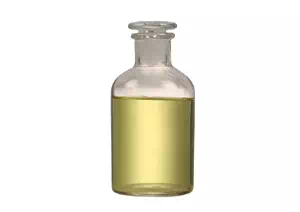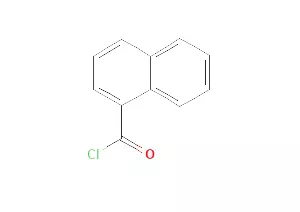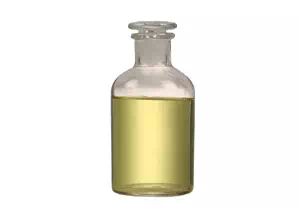1-Naphthoyl Chloride Uses
1-naphthyl chloride, as an important organic synthesis intermediate and chemical reagent, has demonstrated its unique application value in multiple fields. The following is a detailed expansion of its application fields:
The application as a derivatization reagent
In the field of chemical analysis, 1-naphthyl chloride is ingeniously used as a derivatization reagent, especially in the solid-phase extraction combined with liquid-liquid microextraction technology of dispersions, where it plays a crucial role. This method is mainly used for the analysis of compounds such as short-chain dodecanol ethoxy esters and dodecanols. Through the derivatization reaction with 1-naphthyl chloride, these compounds that were originally difficult to detect or separate directly can be transformed into products with specific functional groups and spectral characteristics, thereby greatly improving the sensitivity and selectivity of the analysis. This technology not only simplifies the sample pretreatment process, but also enhances the accuracy and reliability of detection, providing strong technical support for fields such as environmental monitoring and biological sample analysis.
Its application as a high-performance liquid chromatography fluorescence detection reagent
In high performance liquid chromatography (HPLC) analysis, 1-naphthyl chloride plays the role of a fluorescent labeling reagent, especially suitable for the detection of substances with important biological activity and toxicity such as T-2 and HT-2 toxins. These toxins are often difficult to detect directly due to their low concentrations and complex sample matrices. However, through the fluorescently labeled reaction with 1-naphthyl chloride, they can be converted into fluorescent derivatives that are easy to detect and quantify. Under specific excitation light and emission wavelengths, these fluorescent derivatives can generate strong fluorescence signals, thereby achieving highly sensitive and specific detection of T-2 and HT-2 toxins. This technology not only enhances the efficiency and accuracy of toxin detection, but also provides an important detection method for fields such as food safety and environmental monitoring.
Application in Arndt-Eistert synthesis
In the field of organic synthesis, 1-naphthyl chloride plays a key role in the Arndt-Eistert synthesis in the presence of trimethylsilyl diazomethane. This synthetic method is an important approach for preparing β -keto acid esters, and 1-naphthalyl chloride is involved as a key reagent. Through the reaction with trimethylsilyl diazomethane, 1-naphthyl chloride can introduce specific functional groups and structural units, thereby promoting the formation of the target product. This synthetic method has the advantages of mild conditions, high yield and good selectivity, providing an effective strategy for the synthesis of complex organic molecules.
The application of preparing 2-ethyl-1-pentyl-3 - (1-naphthyl) indole and its derivatives
In the fields of drug research and development and organic synthesis, 1-naphthyl chloride is also used to prepare 2-ethyl-1-pentyl-3 - (1-naphthyl) indole and its derivatives. This type of compound has attracted much attention due to its unique structure and biological activity. Through carefully designed synthetic routes and reaction conditions, 1-naphthyl chloride can undergo a series of reactions with other raw materials, ultimately generating the target product and its derivatives. These compounds not only have potential medicinal value, but can also be used as precursors or ligands for new materials and catalysts.
The application and market prospect of preparing 1-pentyl-3 - (1-naphthoyl) indole
It is particularly worth mentioning that 1-naphthyl chloride can be used to prepare a new type of drug intermediate, 1-pentyl-3 - (1-naphthyl) indole. This intermediate has attracted much attention due to its unique structure and properties. In the field of medicine, it may serve as a key intermediate in the synthesis process of various drugs, providing strong support for the research and development of new drugs. Due to its broad market demand and high added value, the production and application prospects of 1-pentyl-3 - (1-naphthoyl) indole are very broad. With the continuous development of the pharmaceutical industry and the constant progress of technology, this new type of drug intermediate is expected to play a more important role in the future.








